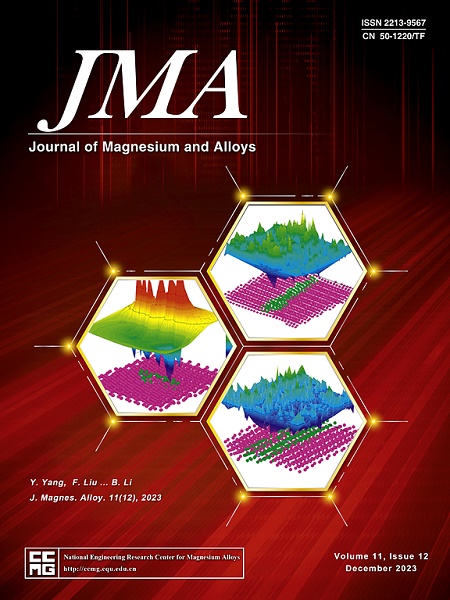A comprehensive overview in improving corrosion resistance of Mg alloys: Enhancing protective coatings with plasma electrolytic oxidation and superhydrophobic coatings
IF 15.8
1区 材料科学
Q1 METALLURGY & METALLURGICAL ENGINEERING
引用次数: 0
Abstract
The corrosion resistance of magnesium alloys is a significant concern in industries seeking to use these materials for lightweight structures. Plasma electrolytic oxidation (PEO) is a process that forms a ceramic oxide film on Mg alloy surfaces, effectively enhancing their corrosion performance in the short term. In this regard, optimizing PEO process parameters is crucial for creating a stable oxide layer. An improved level of corrosion resistance is ensured by applying superhydrophobic coating (SHC) on top of the PEO layer to prevent moisture infiltration, creating air pockets on the surface. Various methods are employed to fabricate SHC on Mg alloys, including techniques like electrophoretic deposition (EPD), Hydrothermal (HT), dip, and spray coating. The synergistic combination of PEO and SHC coatings has demonstrated encouraging outcomes in enhancing the corrosion performance of Mg alloys. This study offers an extensive overview of recent progress in the preparation, characterization, and corrosion behavior of Mg alloys by employing PEO coatings and SHC treatment processes.


提高镁合金耐蚀性的综合综述:用等离子体电解氧化和超疏水涂层增强保护涂层
镁合金的耐腐蚀性能是寻求将这些材料用于轻质结构的工业中的一个重要问题。等离子体电解氧化(PEO)是一种在镁合金表面形成陶瓷氧化膜的工艺,可在短期内有效提高镁合金的腐蚀性能。在这方面,优化PEO工艺参数对于创建稳定的氧化层至关重要。通过在PEO层顶部应用超疏水涂层(SHC)来防止水分渗透,从而在表面产生气穴,从而确保了更高的耐腐蚀性。在镁合金上制备SHC的方法多种多样,包括电泳沉积(EPD)、水热沉积(HT)、浸镀和喷涂等技术。PEO和SHC涂层的协同组合在提高镁合金的腐蚀性能方面显示出令人鼓舞的结果。本研究对采用PEO涂层和SHC处理工艺的镁合金的制备、表征和腐蚀行为的最新进展进行了广泛的概述。
本文章由计算机程序翻译,如有差异,请以英文原文为准。
求助全文
约1分钟内获得全文
求助全文
来源期刊

Journal of Magnesium and Alloys
Engineering-Mechanics of Materials
CiteScore
20.20
自引率
14.80%
发文量
52
审稿时长
59 days
期刊介绍:
The Journal of Magnesium and Alloys serves as a global platform for both theoretical and experimental studies in magnesium science and engineering. It welcomes submissions investigating various scientific and engineering factors impacting the metallurgy, processing, microstructure, properties, and applications of magnesium and alloys. The journal covers all aspects of magnesium and alloy research, including raw materials, alloy casting, extrusion and deformation, corrosion and surface treatment, joining and machining, simulation and modeling, microstructure evolution and mechanical properties, new alloy development, magnesium-based composites, bio-materials and energy materials, applications, and recycling.
 求助内容:
求助内容: 应助结果提醒方式:
应助结果提醒方式:


